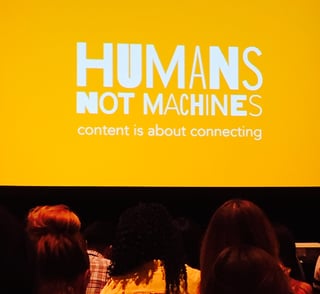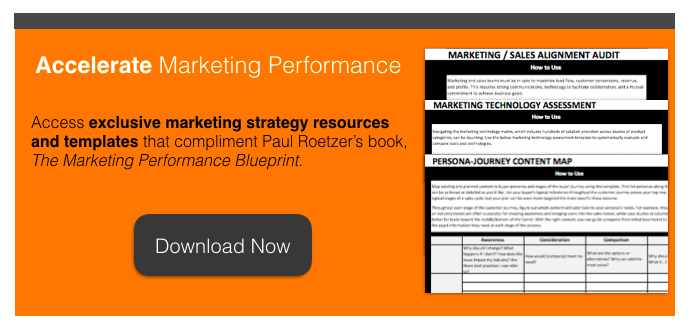 Last month, a group of the PR 20/20 crew headed to Austin for SXSW’s 30th annual conference. This trip is great for catching up on the latest trends in tech, health, space and VR; enjoying the local Mexican and BBQ food scene; listening to live music at what seems like every corner; and finding inspiration from the Austin community and SXSW Interactive programming.
Last month, a group of the PR 20/20 crew headed to Austin for SXSW’s 30th annual conference. This trip is great for catching up on the latest trends in tech, health, space and VR; enjoying the local Mexican and BBQ food scene; listening to live music at what seems like every corner; and finding inspiration from the Austin community and SXSW Interactive programming.
One of this year’s panel sessions, Humans, Not Machines: Content Is About Connecting, is a perfect share for our own PR 20/20 blog audience. Thanks to the panelists Kate Lewis (@kcwl) of Hearst Magazines, Neha Gandhi (@nehaintown) of Refinery 29, and Lockhart Steele (@lock) of Vox Media, for sharing your experiences!
Enjoy a few of my top takeaways, and feel free to add your own take on the topic below in comments.
The Ask: With more platforms than ever before, how do we consistently create compelling content that actually resonates with our audiences?
For these top digital media editors, the answer couldn’t be more obvious: “The work of an editor today is to listen."
That ^ nugget of knowledge was easily one of my favorite takeaways on the topic, and from the trip. Especially in the data age.
As we journalists, marketers and business leaders put pen to paper, we have more information than ever before. We know who our audience actually is, what they most like to read, and what stories earn shares. This list of readership metrics is long. Yet there’s a difference between being data-informed and data-driven.
It’s our job to use machines to tell us what the audience is saying—then use our brains to tell us what the data is saying. You want the basic metrics, mostly to gauge overall temperature and health (what’s our hottest content, and are we growing?). But don’t drown in the metrics: get back to your own brain for analysis and critical thinking to identify and speak to topics that can really hit it out of the park.
For editors, it’s a balancing act across topics, programming and community.
1. Start with a creative content mix.
Today’s reader wants the full gamete of content available. That means everything from quick and fun videos, to researched long-form articles.
For topic generation, look to what your audience reads most, but balance it with your own journalistic curiosity. What do you think they’d read or deserve to know about? Which pieces of the story may be missing?
To gain the most stretch out of top assets, always be thinking about ways to repurpose content. Break a long-form piece into a blog series, or break an in-depth interview into more digestible sound bites and quotes to pepper throughout collateral.
2. Evolve from distribution to programming.
Lines are blurring between earned, owned and paid channels.
For example, a brand can own its SnapChat profile (technically on a free platform where it’s vulnerable to change), and pay for channel content distribution. For partner platforms like SnapChat, brands have full-feature storytelling capabilities. Yet, they see little-to-no data in return. Is it the price for audiences on newer platforms like SnapChat of Apple News, and can we measure return?
The landscape is continually changing, so quickly that no human or machine can predict what’s next. Companies are swapping email for text, spinning up Peach strategies, and are full-steam-ahead on “proven” platforms that didn’t exist two to three years ago. The only constant: nothing is fixed.
Think like a programmer when matching content to platforms. Just as I’d mentioned repurposing assets above—keep your programming schedule in mind when doing so. Shorter video clips are great for Facebook; quotes or imagery can drive attention and clicks from Pinterest; meaty point-of-view articles have a place on Medium; and so on.
3. Grow communities.
Content that resonates and connects with actual humans is social by nature. We read it, we think on it, we share it, we work it into conversation, and we may even incorporate it into our own beliefs or actions.
All panelists voted first-person narrative as the ultimate side of human connection. (Maybe it’s why I prefer to hear news from Colbert, or cry and laugh out loud at the same time to Scary Mommy stories?)
>> Related read: Content Marketing 2.0: Story + Narrative Connect People & Brands
From first-person to many, social platforms enable readers to see what people in their networks are reading, give feedback direct to an author or brand, form bonds with those with similar interests, and grow community by sharing like-minded feedback. For the brands on this SXSW panel, social and mobile accounted for about 50% of all media consumption—with the most engagement around topics that can strike a chord with their unique audiences.
So how are you listening to audiences, navigating new platforms and resonating above the noise?

%20Logo_BlueOrange_Trademark.png?width=800&height=269&name=Ready%20North%20(RN)%20Logo_BlueOrange_Trademark.png)




.jpg?width=300&name=Services%20Hub%203%20(3).jpg)



COMMENTS